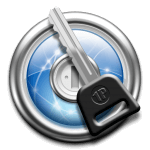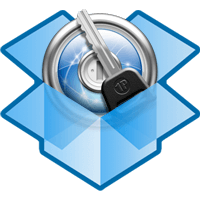
Mat Honan, a 1Password user and writer for Wired, did everything right. He had strong, unique passwords everywhere. Yet he was the victim of an “epic hack”, and had to put a great deal of effort into getting his digital life back.
A very brief account of this Homer-worthy hack is that someone talking to Amazon customer service got into Mat’s Amazon account, from which they were able to learn enough about him to then call Apple’s customer service to get a new password set. Once they had Mat Honan’s Apple ID and password they used Remote Wipe to erase his iOS devices and his Macs. This has been written about extensively elsewhere, but I would like to talk about this in the context of whether there are useful lessons for 1Password users.
Mat described part of his recover process thusly:
I’m a heavy 1Password user. I use it for everything. That means most of my passwords are long, alphanumeric strings of gibberish with random symbols. It’s on my iPhone, iPad and Macbook. It syncs up across all those devices because I store the keychain in the cloud on Dropbox. Update a password on my phone, and the file is saved on Dropbox, where my computer will pull it down later, and vice versa.
But I didn’t have it on any of our other systems. So now I couldn’t get to my keychain. And so I was stuck in a catch-22. My Dropbox password was itself a 1password-generated litany of nonsense. Without access to Dropbox, I couldn’t get my keychain. Without my keychain, I couldn’t get into Dropbox.
Lesson 1: Some might need more than one password
I love the idea that 1Password allows me to just remember one password, my 1Password Master Password. But some of us may actually want to remember a couple more. Here are the strong, unique passwords that I choose to remember:

- My 1Password Master Password
for the desktop My 1Password Master Password on my iOS devices- My Dropbox password
- The passcode for my iOS devices
- My computer login password
- Password for my primary email account
Not everyone will have the same list. Plus, if you use the same Master Password on iOS as you do on the desktop, then your list is of course a little shorter.
What is relevant here is number 3 on that list. I need my Dropbox password in circumstances where I may not have access to 1Password. For example, when I start using a new computer, the first thing I install is Dropbox and the second thing is 1Password. This way, I have all of my 1Password data available to me as I go about setting up subsequent things.
Of course if I always had my phone with me, I could get my Dropbox password from 1Password on my phone, but I didn’t want to count on always having my phone. I’m guessing that this is what Mat did, and he certainly didn’t count on having his phone maliciously obliterated—along with all his other devices—via iCloud’s remote wipe feature.
Fortunately, Mat found a way back into his Dropbox account—turn out he had set up Dropbox on a machine that had not been wiped. So he was able to get to his 1Password data there, and begin to recover his digital life.
Constructing strong, memorable passwords
How do I make good strong passwords that I can also remember? I try to follow my advice in Toward Better Master Passwords. I have yet to follow my own advice with everything, but I am slowly migrating the few passwords that I do need to remember to that system. Indeed, it makes sense to change these gradually so that you are sure to have solidly memorized one new password before creating another that you need to remember.
A few more things I remember
In addition to the passwords that I feel I have to remember, here are a few things that are very convenient for me to remember instead of always looking up in 1Password. I can look them up if I really needed to, but often I need them where I can’t easily get them from 1Password:
- My bank card PIN
- My bicycle lock combination
- My Apple ID password
- My SSH private key password
I simply haven’t figured out a way to copy and paste my bike lock combination from 1Password to the lock.
Lesson 2: Become a backup believer
There are two kinds of computer users: Those who have experienced a catastrophic disk failure and those who will. — Ancient wisdom, source unknown.
First of all, making backups is essential. Today most people have two options for a backup system. We can go with off-site backups, or we can back up to a local disk. Backing up off-site is great protection if your house burns down or is burgled. You have put your eggs in different baskets. Backup to a local disk has the advantage that you aren’t depending on a remote service that you may not be able to access in an emergency. It is hard to make a case that one strategy is better than the other in general.
Here is something that Mat learned in the process.
I’m certainly a backup believer now. When you control your data locally, and have it stored redundantly, no one can take it from you. Not permanently, at least. I’ve now got a local and online backup solution, and I’m about to add a second off-site backup into that mix. That means I’ll have four copies of everything important to me. Overkill? Probably. But I’m once bitten.
But – and here is another reason to have a memorable Dropbox password – your online, off-site backup system will require a password to access. If you encrypt your at-home backups, those too will require a password to work from. Good backups are important, but you may need to get to your 1Password data before you can restore from a backup.
An old lesson: Don’t reuse passwords
Even if we take good care of our passwords, that doesn’t mean that all the sites and services that we use take the same care. Mat’s case illustrates this fact when it comes to password reset mechanisms, but it can also apply to how passwords are stored and encrypted on sites. Because not everyone handles things perfectly, we need to make sure to use unique passwords for each site and service.

 by Jeffrey Goldberg on
by Jeffrey Goldberg on
